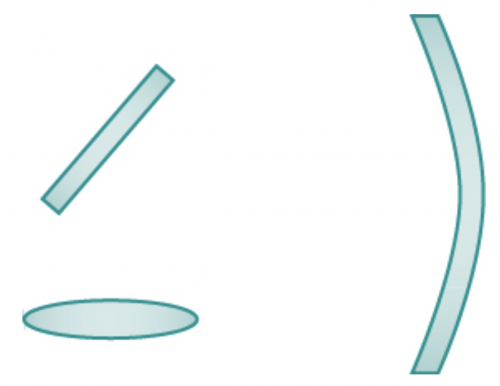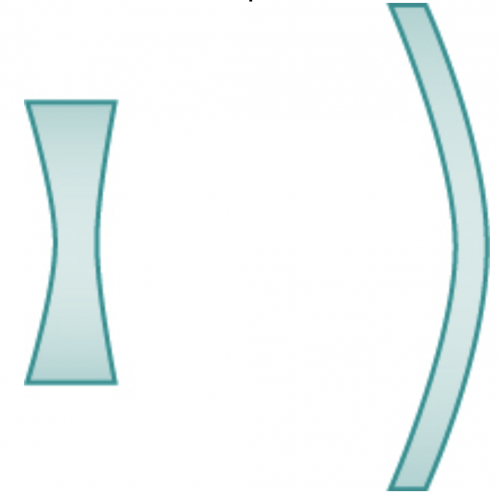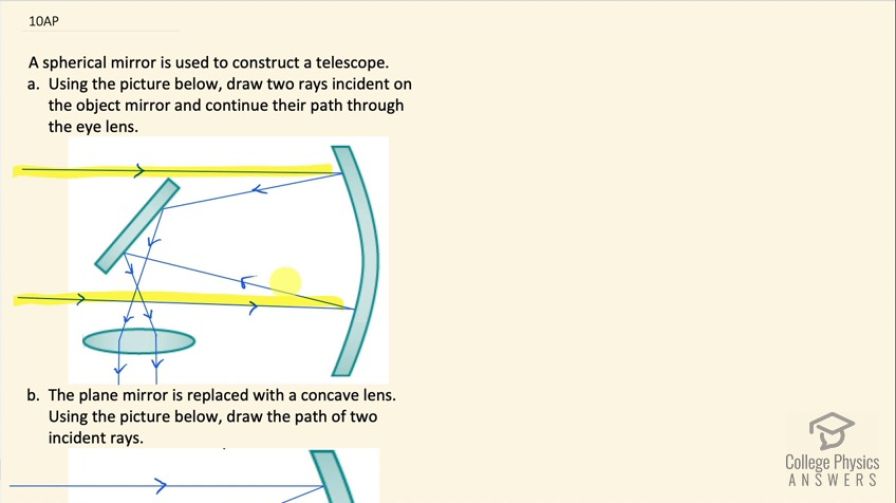Question
A spherical mirror is used to construct a telescope.
- Using the picture below, Figure 26.32, draw two rays incident on the object mirror and continue their path through the eye lens.
- The plane mirror is replaced with a concave lens as in Figure 26.33. Using the picture below, draw the path of two incident rays.
- Using the concave lens setup, describe the final image created by the concave lens.


Final Answer
Please see the solution video. For part (c), the image will be upright, real, and smaller.
Solution video
OpenStax College Physics for AP® Courses, Chapter 26, Problem 10 (Test Prep for AP® Courses)

vote with a rating of
votes with an average rating of
.
Video Transcript
This is College Physics Answers with Shaun Dychko. We have two incident rays from our far-off object these incident rays are parallel because the rays from an object that is very distant they are at such a great distance, there can be divergence of those rays. You know, if it was radiating radially away from the object once you get really far away, you don't really notice the divergence of the rays anymore they just seem to be parallel. Okay! So these rays are parallel from the distant object. They reflect off this curved mirror— this concave mirror— and then reflect off this plane mirror and then go through this converging lens eyepiece. There we go! And then for part (b), we are told that the plane mirror is replaced with a concave lens and so we have the same parallel incident rays but then those reflect through this concave lens which causes these converging rays to diverge to the point where they are parallel and this if you had a screen here this would result in an image that is upright because the top ray that's incident ends up on the top of the image and the image will be real because there really is light rays passing through to this image and the image will be smaller because whereas before we have an image that's the size of from here to here— this might be d o— now we have this is our... or sorry h o I should say our object height here we have our image height, which is smaller.